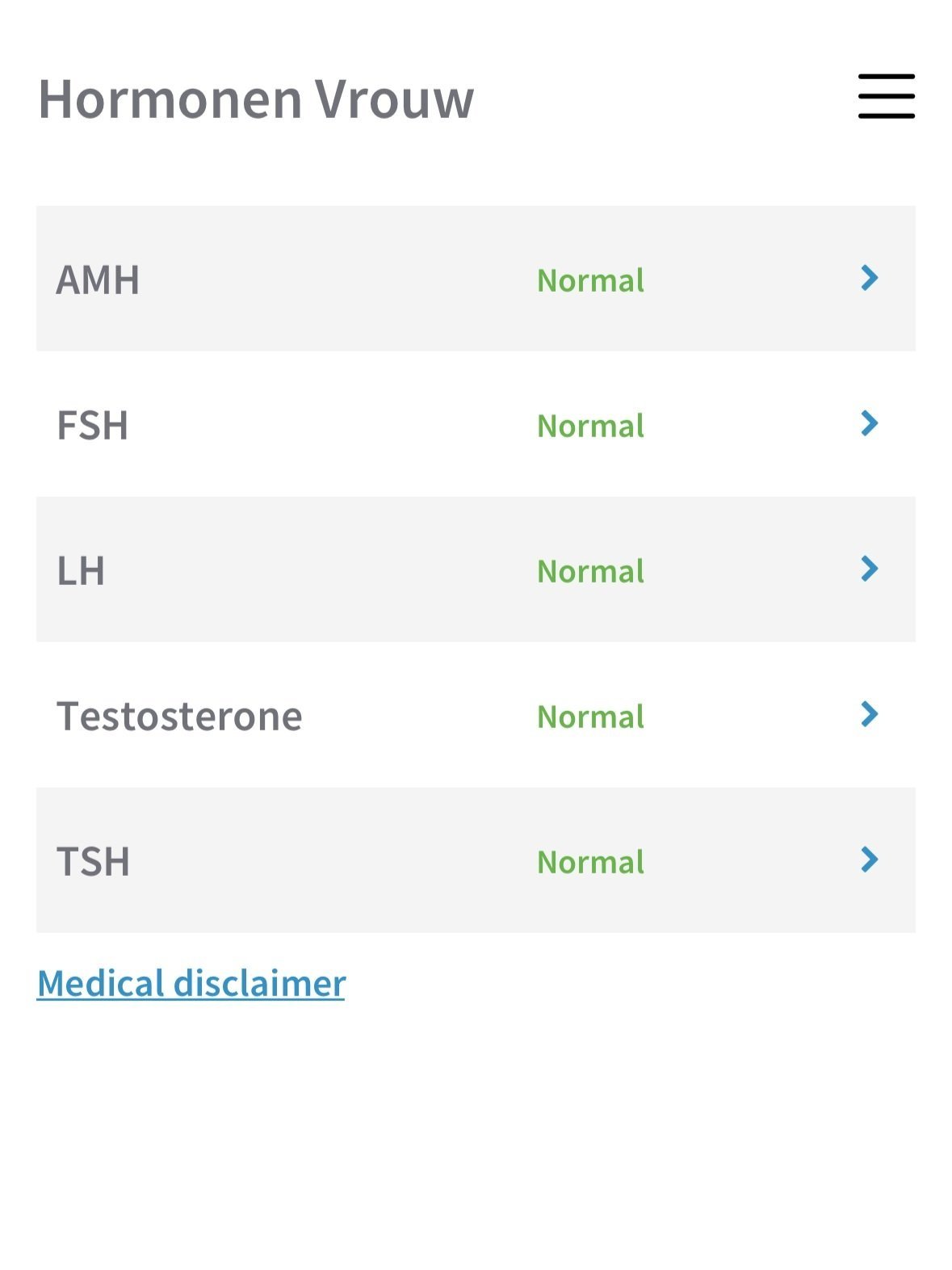Gain valuable insights to make informed plans.
No test, ours included, can tell you for sure whether you’ll be able to get pregnant or not. Fertility is complex, and there’s no absolute predictor of fertility or infertility.
Our test, developed with our certified diagnostic lab, gives you a personal hormone profile based on clinical science. It doesn’t provide a yes or no answer, but a snapshot of your potential risks.
And knowing these risks early means you have more time, more options, and more control.
-
AMH gives a snapshot of your current fertility potential-not how easy it is to get pregnant, but how many eggs your body has to work with.
It’s useful if you’re considering freezing your eggs, delaying pregnancy, or just want to know where you stand.
It also helps doctors understand how your body might respond to fertility medications.
-
If your TSH is too high or too low, it can disrupt your cycle, ovulation, and hormone balance, making it harder to get pregnant.
Your thyroid works harder during pregnancy. It's important to make sure it's functioning well before and during pregnancy to support the baby’s development.
-
Higher than normal FSH levels can be a sign that your ovaries are working harder to produce eggs- often meaning a lower egg count.
Along with AMH, FSH helps give a snapshot of how many eggs you have left.
Abnormal FSH levels can point to premature ovarian insufficiency (POI), menopause / perimenopause or ovulation problems.
-
Elevated testosterone levels can be linked to conditions like PCOS, which may affect ovulation and fertility.
Too much testosterone can disrupt ovulation and periods, which can make it harder to get pregnant.
-
People with polycystic ovary syndrome (PCOS) often have consistently high LH levels, which can disrupt ovulation.
High or low LH levels can give clues about hormonal imbalances, premature ovarian insufficiency (POI), or other fertility-related conditions.
What do we measure?
Our Technology
Your fingertip has many small blood vessels, making it perfect for collecting capillary blood. This small sample is enough for accurate lab analysis, and studies show that finger-prick blood is just as reliable as a traditional blood draw when it comes to hormone testing.
The method has been medically validated and is widely used in diagnostic testing.
Why finger-prick testing works
Why you can trust our lab
We only work with a certified laboratory that meets ISO standards, ensuring your sample is handled with the highest level of care.
Upon arrival, your sample is checked for temperature, volume and transit time and all results are reviewed by our clinical chemist.
Know your hormones.
Know your options
Insights into your ovarian reserve - whether you have more or fewer eggs than what's typical for your age.
An assessment of your thyroid levels, which can impact your mood, skin, weight, energy, and ovulation.
Identification of any underlying conditions, like PCOS that could affect your chances of conceiving.
Provides clues about when you might enter menopause, based on hormone levels like AMH.
If a doctor might expect to retrieve more or fewer eggs than average for egg freezing or IVF.

All of our at-home tests are clinically validated and analysed in an ISO 9001 & ISO 13485 certified laboratory.
What’s in the report?
For each hormone tested you will receive a clear explanation of the purpose of that specific hormone, your result, whether it’s inside the normal range and what it could potentially mean for you.
The report will show you any hormonal imbalances, potential risks and any potential reproductive and thyroid conditions that you should look into.
Desislava Nesheva | Postdoctoral Researcher & Consultant
“Athena was a game-changer for me. It was such a convenient way to quickly check all the important hormones related to reproductive health. In the Netherlands, it’s nearly impossible to get these tests done through GPs. Athena made it easy and so much less frustrating.”
Recommended reading
Become knowledgeable about fertility with our clear and accessible articles, crafted by our expert research team. Learn more about our at-home hormone tests, and explore our guides to better understand your options.























